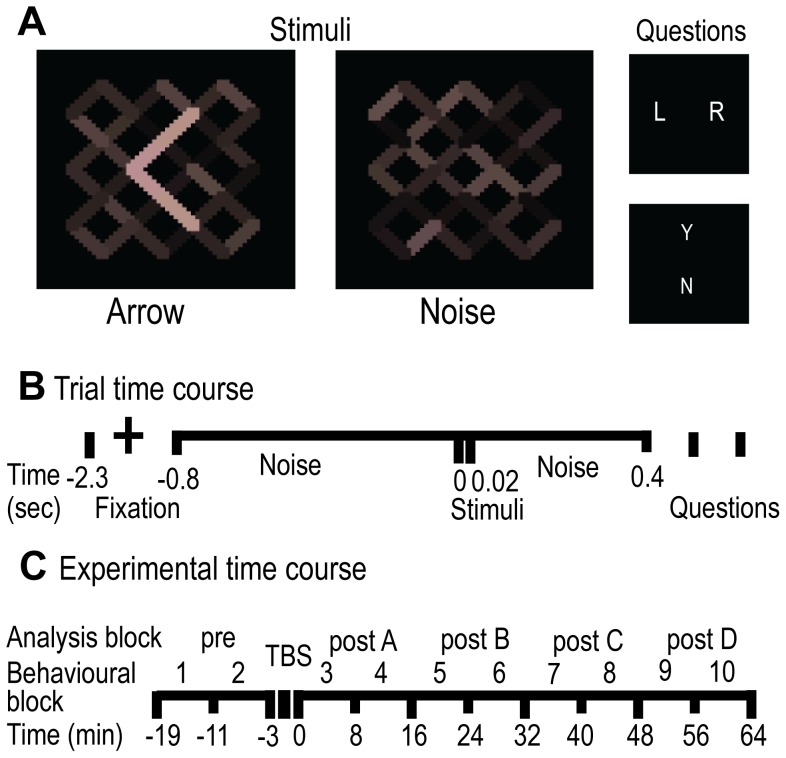Figure 1. Experimental Design.
A. Example of arrow stimuli, noise (stimulus-absent) and task questions. The questions presented on every trial were ‘Was the arrow pointing left or right?’ denoted by ‘L R’ and ‘Did you see the arrow? Yes or No’ denoted by ‘Y N’. B. Time course of each trial. Fixation was followed by noise alternating at 50 Hz with a stimulus frame (20 ms) displayed at 800 ms on half of the trials. Responses to questions followed after a further 400 ms of noise and were not speeded. Questions commenced with the ‘L R?’ decision. C. Time course of the experiment. Behavioural (and MEG acquisition, see Experiment 4) blocks of eight minutes were collapsed into sixteen-minute analysis blocks, to align with the acquisition of MRS (see Experiment 3) and phosphene threshold data (see Experiment 2) acquisitions. Pre-TBS blocks were used to baseline the data. Active and control TMS were applied in separate sessions.

